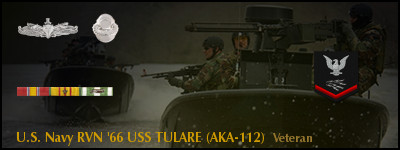Preping new brass
-
Orion2see
- New Member
- Posts: 48
- Joined: Mon Jul 21, 2008 6:48 am
- .204 Ruger Guns: Cooper Varminter
- Location: Choctaw, Oklahoma
- Contact:
Preping new brass
Just wondering how much prep you guys do on new .204 brass? My past practice has been to run them through my neck sizing die to fix any bent necks and uniform the primer pocket - then load and shoot them. I never trim until after firing at least once. Then I use my Sinclair flash hole deburring tool. It requires cases be the same length, so that is why I wait until after firing to accomplish that task. What should I be doing differently?
- Rick in Oregon
- Moderator
- Posts: 4942
- Joined: Thu Dec 01, 2005 4:20 pm
- .204 Ruger Guns: Sako 75V, Cooper MTV, Kimber 84M, Cust M700 11 Twist
- Location: High Desert of Central Oregon
- Contact:
Re: Preping new brass
Orion: You're spot-on right now, bud. The only thing I do differently is deburr the flash holes along with neck size and primer pocket uniform prior to the first firing, but I use the K&M flash hole deburring tool, which is not dependent on case length, as it bottoms out on the inside case web at the bottom, so case length does not matter.
I also do not trim until once fired, because as you mentioned, they all change length to a varying degree, so best to trim after the initial fireforming process. You be good 'ta go!
I also do not trim until once fired, because as you mentioned, they all change length to a varying degree, so best to trim after the initial fireforming process. You be good 'ta go!
-
OldTurtle
- Senior Member
- Posts: 398
- Joined: Sat Jan 28, 2006 9:42 pm
- .204 Ruger Guns: Savage mod. 116 and Custom .204 AR
- Location: East Central MO
Re: Preping new brass
Since I load for both an AR and a Bolt Action, I take my new brass through the full reloading cycle so all brass is prepped and ready for charging and seating as I need them... without having to worry about their consistency.
If I'm working up a new load, I have put together a portable charging set up that I can take to the range to experiment with seating depth, powder charges, etc and don't want to worry about a fail-to-feed in the AR.. as I have encountered some dinged case mouths once in a while..
After the first firing, I'll keep the brass separate per rifle and just neck size the ones for the bolt action.
If I'm working up a new load, I have put together a portable charging set up that I can take to the range to experiment with seating depth, powder charges, etc and don't want to worry about a fail-to-feed in the AR.. as I have encountered some dinged case mouths once in a while..
After the first firing, I'll keep the brass separate per rifle and just neck size the ones for the bolt action.
AR

Factory/Factory


Factory/Factory

-
Bergcrane2
- Senior Member
- Posts: 222
- Joined: Wed Jan 04, 2006 7:58 am
- .204 Ruger Guns: Remington VSSF II
- Location: Michigan, USA
- Contact:
Re: Preping new brass
I do the same thing. I've seen too many new cases that were bent, dented, or whatever.OldTurtle wrote: I take my new brass through the full reloading cycle so all brass is prepped and ready for charging and seating as I need them... without having to worry about their consistency.
- Silverfox
- Senior Member
- Posts: 937
- Joined: Tue Feb 01, 2005 1:51 pm
- .204 Ruger Guns: Savage 12VLP purchased in June 2004 + 2 other custom .204s
- Location: NW North Dakota
Re: Preping new brass
Orion2see--I always lightly chamfer and debur the casing necks as well as the chores you mentioned.
Catch ya L8R--Silverfox
-
Wrangler John
- Senior Member
- Posts: 306
- Joined: Wed Nov 26, 2008 5:05 am
- .204 Ruger Guns: Savage Precision Target/Shilen Custom
Re: Preping new brass
After working up courage and swilling three cups of coffee, I dip the necks into Imperial Neck Lube, then run 'em through a neck sizer. Next they get run through a trimmer set to 1.840", then inside chamfered. Next, being obsessive, I use a neck turning tool to skim the wire bead off the case mouth left over from trimming, before outside chamfering. I found that raw factory brass and that trimmed by a rotary trimmer, have a little wire bead that the outside chamfering tool won't touch on these .204 cases. Yeah, it's a little burr that can just barely be felt, and requires a glass to see, but takes only a second to remove. I do not turn the neck, just clean up the mouth. The flash hole uniformer comes next, then the primer pocket uniformer.
This procedure is a shamanistic ritual, an appeal to the spirits of brass and nonsense, but it gives me a feeling of precision and mastery. What will really effect accuracy is primer seating depth and force; too shallow, and the groups open; too much force after bottoming and the pellet is crushed causing flyers. I use a old Lee hand tool to prime, it has less leverage allowing me better feel when the primer reaches bottom.
What will really effect accuracy is primer seating depth and force; too shallow, and the groups open; too much force after bottoming and the pellet is crushed causing flyers. I use a old Lee hand tool to prime, it has less leverage allowing me better feel when the primer reaches bottom.
This procedure is a shamanistic ritual, an appeal to the spirits of brass and nonsense, but it gives me a feeling of precision and mastery.

